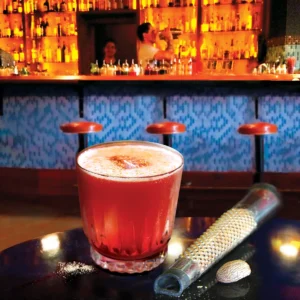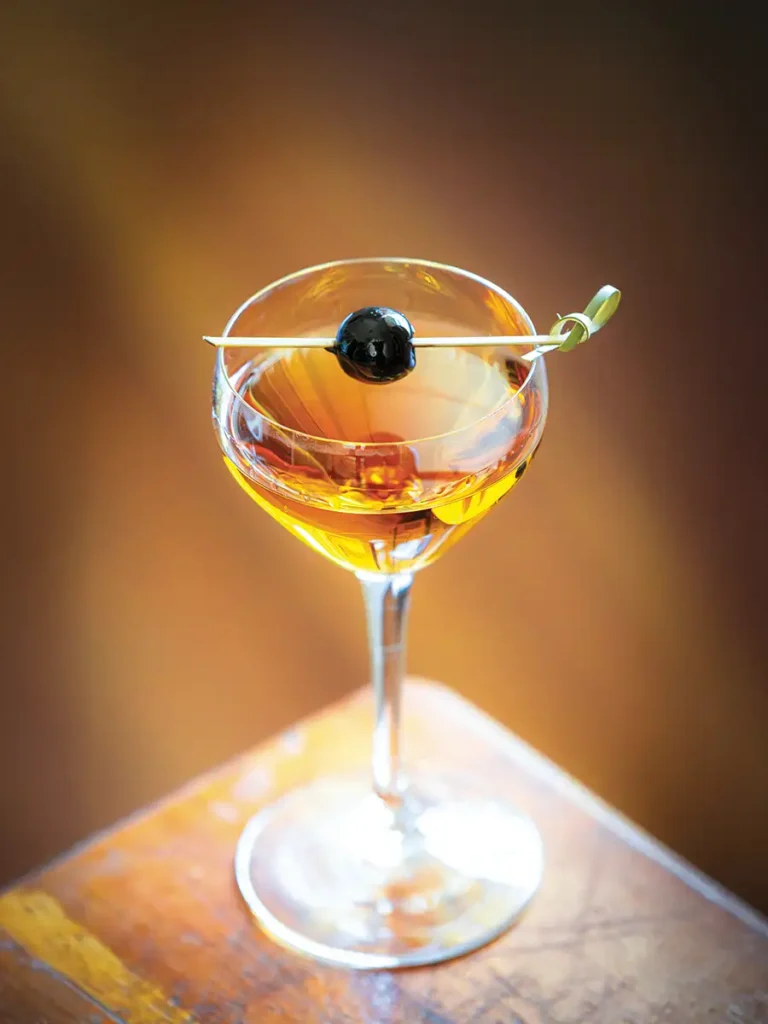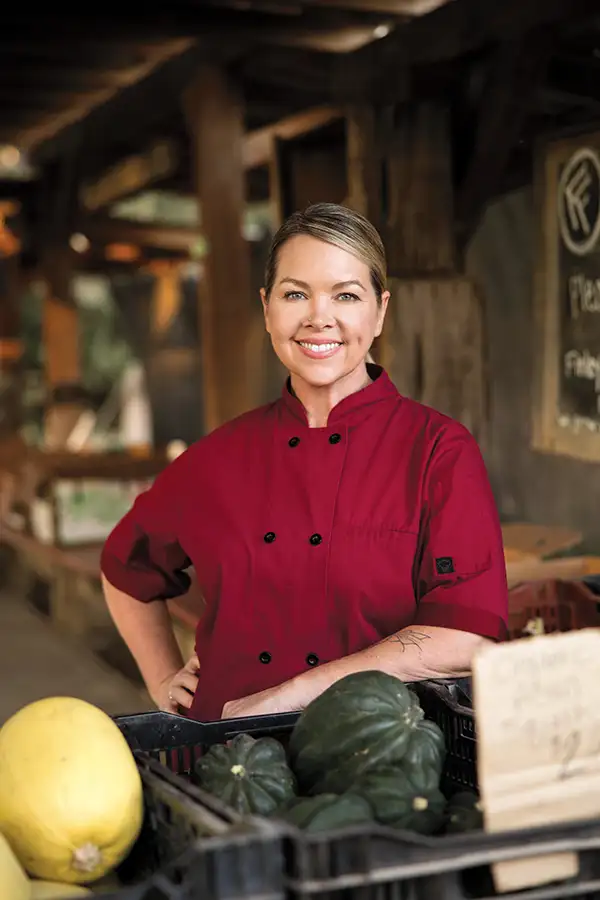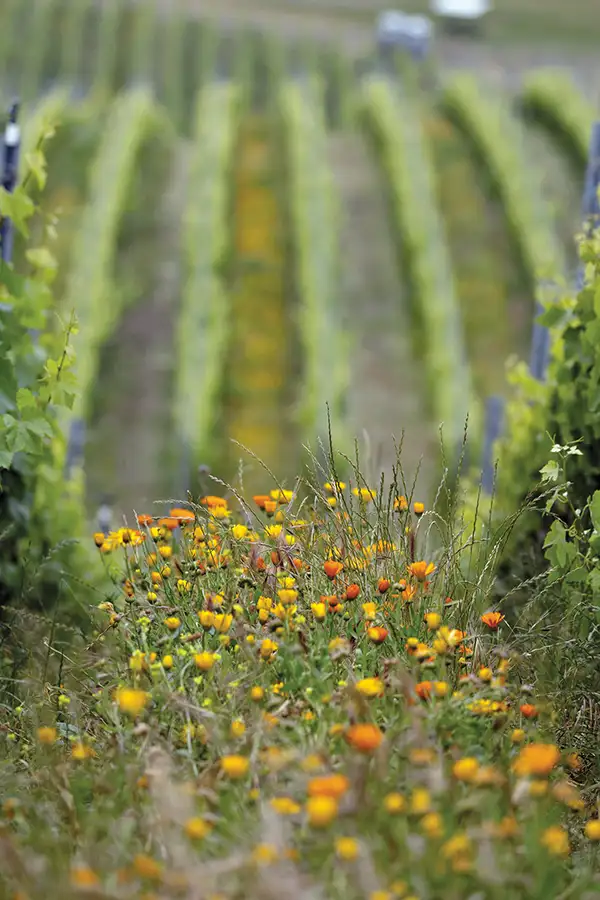Transfiguration
Poetry in a Glass
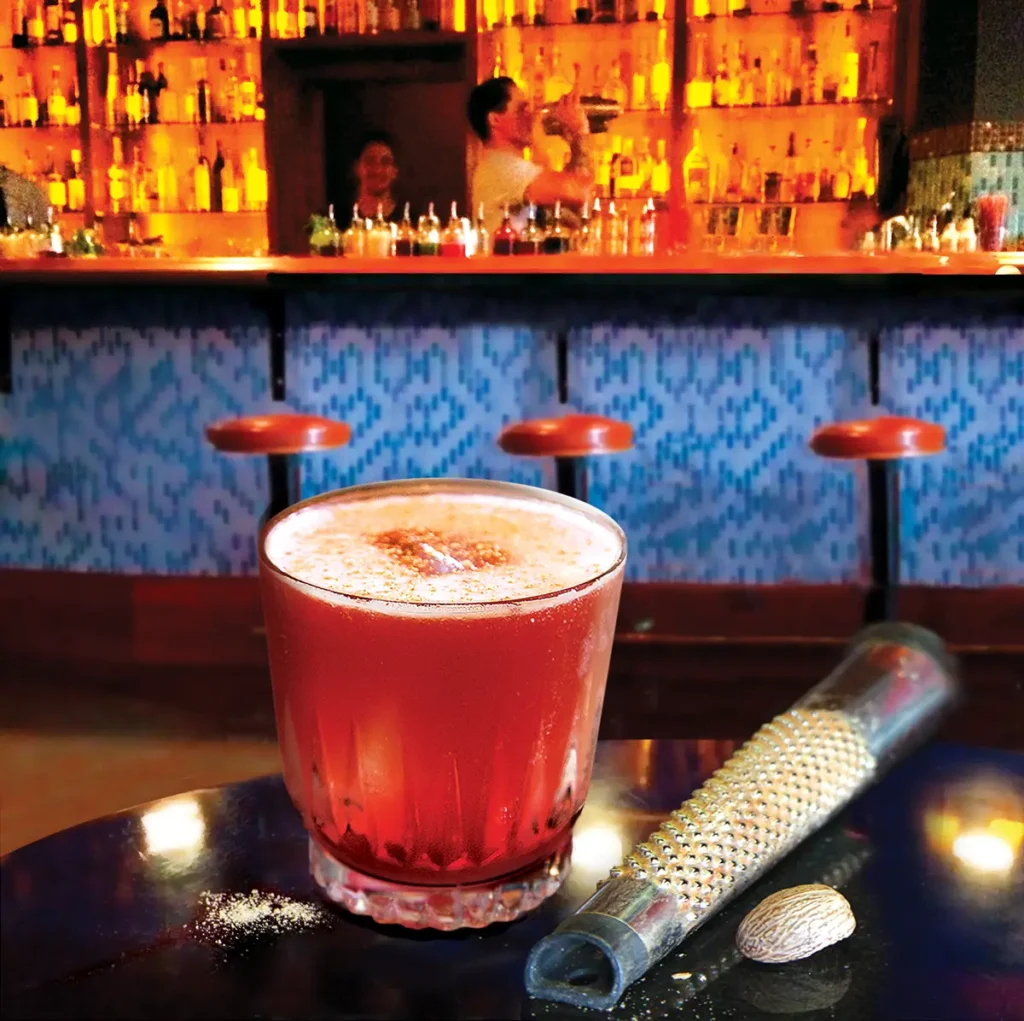
While the tightrope between inspiration and intoxication can be difficult to toe without falling off at times, many a writer has turned to the liquid muse for a spur or a spark. To explore this complicated subject, Edible decided to turn to The Good Lion — which fittingly took its name from a Hemingway short story about a well-mannered lion who ate pasta and scampi and drank Negronis or Americanos.
The Good Lion has helped develop a fall cocktail that not only honors the season but also celebrates Santa Barbara’s first poet laureate, the late Barry Spacks. This isn’t merely an accidental connection, as Spacks Street, an alley just the other side of the Granada Theatre from The Good Lion, also honors the fine poet and long-time teacher at UC Santa Barbara.
When asked to think of fall, Brandon Ristaino, co-owner of The Good Lion with his wife, Misty, turned to the fig as the flavor place to start. “While they begin in mid-summer, they run into deep fall,” he says, “but they taste more like a fall fruit.”
It’s hard to argue with that, as figs seem the essence of harvest, so ripe, fleshy and juicy. Ristaino gets his locally, as he strives to do with most of his fruit and produce ingredients, in this case from Mud Creek Ranch (regulars at the Santa Barbara Saturday Farmers Market). For this drink he uses Mission figs, although he suggests whatever you can get locally—and that could even be from your yard’s tree—should work well.
Thanks to its fruit base, the drink is named the Transfiguration Cocktail. That also refers to a line in Spacks’s poem “Whitewater Vision,” which appears in his last book just published by Santa Barbara’s own Gunpowder Press, which held a release party at, of course, The Good Lion. The drink achieves the kind of Zen balance Spacks strived for in his life and art; the world flashing its brief beauty in a well-crafted line, an elegantly composed cocktail.
“I love blended Scotch, Jamaican rum and nutmeg together,” Ristaino explains, “and our flavor bible said all those flavors play well together. And then the fig syrup, while a bit of a pain in the butt component, takes only 30 minutes to make. You can even put that on your pancakes. Or I might whip some of it with cream and put it in my coffee if I’m in a decadent mood.”
While the drink seems to have a bunch of moving parts, they work in a series of shadings and warmth—just what one wants on a fall evening as the hint of winter cold settles in. And while Ristaino calls out brands, he’s willing to admit one can sub in other types of Scotch or rum, if the home bartender pays attention to some rules. One of the plusses of the drink is that blended Scotch tends to be cheaper; just avoid brands like Johnny Walker Black that might be too peaty for the drink’s balance. Ristaino says, “Blended Scotch is a beautiful base, but you want one more malt forward.”
He’s a big fan of the Smith and Cross rum—and notice how little you will use, so get ready to make more rum drinks—but stresses “the higher the proof the better.” Think of it as the lick of fire in the otherwise milder Scotch. He also encourages playtime when it comes to the bitters, suggesting people try orange or a barrel-aged variety to see how that gives the drink different angles.
Again, having port in the house (as opposed to a home in every port?) never hurt anyone. “There’s very little really bad port out there,” he suggests and then offers, “You can also sub port in for sugar in an Old Fashioned as a fun variation.”
Finally, The Good Lion often offers its guests a gratis punch to enjoy while they make their own cocktail decisions. Turns out, the Transfiguration can do double duty as punch, too, and you can do it at home. “Multiply it out at x number of people coming to your house and then add 25% dilution with a black or green tea or water,” Ristaino says. “That’s a pretty bitchin’ party punch for the house… you will be rocking it!”

